Newsletter August 2022
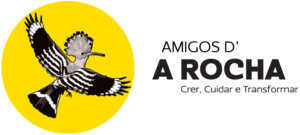
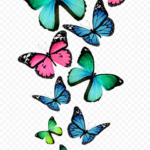 This month find out how climate change is affecting plants and the latest of our butterfly census.
This month find out how climate change is affecting plants and the latest of our butterfly census.
Enjoy the summer!
Helen & Filipa
S
N
A
P
SHOT

George Washington Carver

American Agricultural scientist and inventor
Born: 1864, Missouri, USA
Died: 5th January, Alabama, USA
George Washington Carver, born into slavery, in a farm near Missouri; the exact date of his birth is unknown, maybe January or June 1864 (was born before slavery was abolished in 1865). His parents, Giles and Mary had been purchased by Moses Carver, a German American farmer; his father died before he was born and at the age of one, he and his family (mother and sister) were kidnaped by a band of slave raiders. Moses Carver managed to find George and brought him back to the farm (but never found his mother and sister), he was raised by Moses and his wife as a son and they taught him to read and write.
Since a young age he was interested in plants and their diseases; he experimented natural pesticides and was known as “the plant doctor”. He stayed at the farm until he was 12 and then left for study. He managed to finish high-school in Minneapolis, Kansas, while working in various occupations like farmhand, laundryman, householder worker or hotel cook. Some friends encouraged him to continue his studies and he managed to be accepted at the Simpson College, Iowa, where he initially studied art and piano, but then changed to botany in the Iowa State Agricultural College.
In 1984, Carver finished his degree in Agricultural Science, being the first African American to earn a Bachelor of Science degree and later in 1896 he earned his Master in Agriculture. After that he was invited to be the director of the new Agricultural Department at the Tuskegee Normal and Industrial Institute, in Alabama, where he worked for 47 years. During his life he developed techniques to improve soils and the use of alternative crops like soya and peanuts.
IFO’s – Identified Flying Objects…
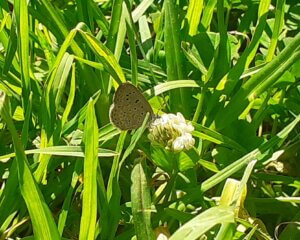
African Grass Blue
(Zizeeria knysna, Trimen, 1862)

Photos by Filipa Bragança

Morphology: It is a small butterfly from the Lycaenidae Family, with a wingspan between 20 and 25 mm (females are slightly larger than males). The upper side of the wings are purple blue with a dark brown band across the margin, in males and brownish with purple tones in females; both have white fimbriae on the hindwings. The underside of the wings is pale hazelnut with several dark spots. Usually flies very low over short grasses. Adults fly from March to November (depending on the location).
Habitat: Prefers hot and wet areas, water streams, gardens, agricultural areas, coastlines and rocky slopes.
Distribution: Africa, Iberia Peninsula, Canárias, Ásia tropical and Austrália. In Portugal can be found at the warmer areas, along the coastline in the south part of the country.
Notes: The larvae feeds on several herbaceous plants, like the Strawberry Clover (Trifolium fragiferum), the Lucerne (Medicago sativa) and Oxalis sp. This species is locally endangered due to overbuilding and agricultural intensification.
Tweet… Tweet…

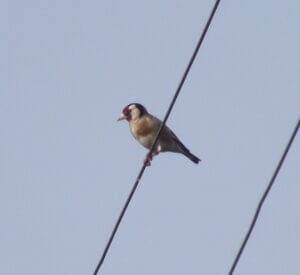
European Goldfinch
(Carduelis carduelis, Linnaeus, 1758)
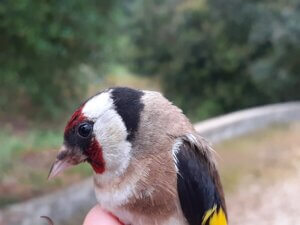
Photos by Filipa Bragança
Identification: It is a small passerine from the Fringillidae Family, with approximately 12 cm in length and wingspan between 21 and 25 cm. The wings are black with a large yellow band and white marks, the upperparts are warm brown and the underparts are whitish with warm brown breast; the tail is forked black and white. The head has a distinctive red mask that extends behind the eye and is black at the top and white on the sides, the bill is ivory colour, long and pointed. Females and males are alike (more extensive red mask in males) and juveniles have streaked brown head.
Habitat and Ecology: Inhabits woodlands, pine forest, orchards, open wooded areas, gardens, pastures and edges of forests. The diet consists of seeds, preferably thistles seeds, but during breeding season can feed on small invertebrates.
Distribution: Europe, North Africa and Western and Central Asia. Was introduced in several parts of the world, like North and South America and Australia. In Portugal is more common in the south. Mainly is a resident bird, but some northern populations can migrate.
Threats and Notes: Least Concern (LC) according to the Red List of the International Union for Conservation of Nature (IUCN). The population appears to be decreasing. The Latin name “Carduelis” comes from is favourite food source, Thistle seeds. This species was captured and traded as a cage bird in the past, due to its beautiful colours and song.
DID YOU KNOW? 
-
A Rocha is taking part in the Project “Live Science in summer” with free activities: Bird Ringing and Moth Monitoring. This project offers free
 activities all over the country. Visit the website for more information (only available in Portuguese) here.
activities all over the country. Visit the website for more information (only available in Portuguese) here.
- In July, a group of 3 students from Gent University, Belgium, came to Cruzinha for their field work. They are studying waxbills (see Newsletter March 22) and were catching them at Fontes de Estômbar, Lagoa. Apart from the waxbills they caught 2 very nice species: Great Reed Warbler (Acrocephalus arundinaceus) and Sedge Warbler (Acrocephalus shoenobaenus).

Great Reed Warbler (Acrocephalus arundinaceus)
Photo by Marina Sentis Villa

Sedge Warbler (Acrocephalus shoenobaenus)
Photo by Marina Sentis Villa
- In June, 67. 9% of Portugal territory were in severe drought and 28. 4% in extreme drought! Save water!

Bravura, Odiáxere
Friends Event -21st September 2022 – put it in your diary and book next month
Butterfly Walk & Lunch at Cruzinha (Walk in the biodiversity Station of Bravura)
09.30am to 14.30pm
Tickets 25 Euro (friends) 30 Euro (non Friends)
More information and bookings available from 1st of September (next newsletter)
 INVASIVE SPECIES
INVASIVE SPECIES
Tree of Heaven (Ailanthus altissima, (Mill.) Swingle)
Clade: Angiosperms
Order: Sapindales
Family: Simaroubaceae
Origin: Northern and Central China
Size: up to 20 metres in height
The Tree of Heaven is a deciduous tree, can grow up to 20 metres in height. The bark is smooth, grey with pale stripes; forms shoots directly from the root. The leaves are long, pinnate, and compound, containing 10 to 41 leaflets organised in pairs; the young leaves have reddish tips. The flowers are unisexual, small and yellow- greenish gathered in panicles; the male flowers have an unpleasant odour. The fruit is a spirally-twisted samara with one seed, light reddish-brown, growing in clusters.
 The Tree of Heaven is native to warm and temperate regions of China; it prefers moist and loamy soils, but is adaptable to a wide variety of soil conditions and can tolerate a wide range of climatic conditions, although does not tolerate deep- shade and flooding. Outside its native range it can grow in forest margins, roadsides, river banks, old fields, scrublands, pine and oak forests.
The Tree of Heaven is native to warm and temperate regions of China; it prefers moist and loamy soils, but is adaptable to a wide variety of soil conditions and can tolerate a wide range of climatic conditions, although does not tolerate deep- shade and flooding. Outside its native range it can grow in forest margins, roadsides, river banks, old fields, scrublands, pine and oak forests.
This species was introduced in Europa in the 1740’s for ornamental purposes, in the USA in 1784 and become extensively naturalised. Nowadays can also be found, in Australia, South Africa, India, Japan and several other Asian countries. In Portugal it is considered an invasive species due to its prolific fruiting, rapid grow rate, ready germination and adaptability to infertile soils. This species also produces alellopathic chemicals which stops other species growing.
In China, the leaves, roots and bark are used in traditional Chinese medicine and has been grown in several parts of the world as a host plant for the Ailanthus Silk Moth (Samia cynthia), a moth involved in silk production.
POPPED UP

Family: Asteraceae
Identification: It is a biannual or annual herbaceous plant, can grow from 15 to 70 cm in height. The stem is hairy, erect and branched at the top; the leaves are long, lanceolate, deeply cropped, and green mottled with white markings on the upper side and whitish hairy underneath; the leaves have strong thorns. The flower heads are solitary and covered by hairy scales, the colour varies from whitish to purple, the central flowers are hermaphrodite. Flowers from February to June.
Habitat and distribution: Uncultivated fields, fallow lands, waste places and road sides, it grows in every kind of soil. Native from the Mediterranean Region.
Notes: The Latin name “Galactites” means “milk” in Greek referring to the dense white hairs. This plant is known to attract many insects.

Photo by Filipa Bragança
Purple Milk Thistle
(Galactites tomentosus, Moench)
DATES TO REMEMBER

4th, 11th, 18th and 25th August – Cruzinha Bird ringing display & Moth Talk (9 to 12 am). This month our activities are part of the project “Live Science in Summer”. Book here
15th August – Public Holiday – Nossa Sra da Assunção (Religious Festival)
Thank you for supporting the Friends of A Rocha Portugal
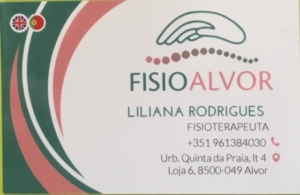
Physiotherapy, Massages (relaxation, sports, therapeutic)
Other therapies
Beauty (manicure, pedicure, hair removal, facials)
Open Monday to Friday

Dr Roy Rodrigues
Av. Do Brasil, Qta das Palmeiras, Lt P2, R/c A, 8500-299 Portimão
(+351) 282180683
royaldente@gmail.com
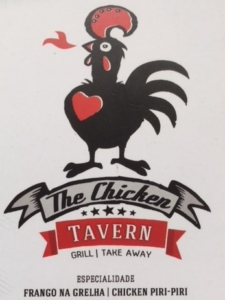
Urbanização Mar e Serra n° 47, Alvor
8500 – 783 Portimão
(+351) 911597735
We are happy to announce that Liliana Rodrigues the proprietor and qualified physiotherapist of PhysioAlvor is moving to Urb. Má Partilha lote 13, Rua do Lumiar loja 5. 8500-074 Alvor, as of the 1st August 2022.
We wish her success in her new premises & thank her for her continued support of Friends of A Rocha Portugal.
She is an amazing professional, who practices with knowledge and empathy.
Thought of the month 
“The Earth will not continue to offer its harvest, except with faithful stewardship. We cannot say we love the land and then take steps to destroy it for use by future generations.” — Pope John Paul II (1920-2005), Polish, head of the Catholic Church from 1978 until 2005

LETS BE GREEN – LETS BE GREEN – LETS BE GREEN 
Why is Bamboo so awesome?
- Bamboo can be very sustainable if grown in the right conditions: fast growing, is very low maintenance as it doesn’t need fertilizers or large
 amounts of water.
amounts of water. - It doesn’t need to be replanted as it self-generates from its own roots. Also, it produces 35% more oxygen than other hardwood trees.
- Bamboo is ideal when used in its raw original form, for furniture, or objects like toothbrushes or cutlery. It’s an eco-friendly alternative to other types of hardwood trees like Oak (which grows much slower).
- Many bamboo fabrics on the market are a form of rayon where the manufacturing process is highly intensive and involves harmful chemicals. Although the production of bamboo is more sustainable than cotton, the manufacturing process of bamboo fabrics uses highly toxic chemicals and is not considered a sustainable solution.
- Choose bamboo products when they are made of raw bamboo as mentioned above, bamboo is a sustainable alternative to most woods.
LETS BE GREEN – LETS BE GREEN – LETS BE GREEN
Butterfly Census 2021- Results
Since May 2019, A Rocha is taking part in the National Butterfly Census, to access the health of the butterfly population. The monitoring happened between February and November 2021, with a total of 29 visits. During this period there were 1004 individuals counted from 5 different Families, belonging to 28 different species.

Speckled Wood
The most abundant species were the Speckled Wood (Pararge aegeria), the Southern Gatekeeper (Pironia cecilia), The Meadow Brown (Maniola jurtina) and the Large White (Pieris brassicae). In 2021 3 new species were recorded (species present in the area but not recorded previously during the monitoring).
The total number of butterflies in 2021 decreased comparing with the year of 2020 (same period and same amount of visits), although it is hard to make final conclusions.
Read the full report here (only available in Portuguese)
Climate change-plants
Climate change increases the factors that cause stress in plants and make them weaker and less resilient. The rising temperatures can cause more droughts, more wildfires, and more invasive pests’ outbreaks.
 Plants productivity will decrease as a consequence of the extreme weather conditions (droughts, wildfires, hurricanes), because plants are the primary producers of the food change this will cause the decline of animal populations and have serious consequences on the food availability. On the other hand, environmental changes can be disadvantageous to native plants and an opportunity to invasive species to thrive and take over the ecosystems, causing the loss of biodiversity (invasive species are already one of the major causes of species extinction).
Plants productivity will decrease as a consequence of the extreme weather conditions (droughts, wildfires, hurricanes), because plants are the primary producers of the food change this will cause the decline of animal populations and have serious consequences on the food availability. On the other hand, environmental changes can be disadvantageous to native plants and an opportunity to invasive species to thrive and take over the ecosystems, causing the loss of biodiversity (invasive species are already one of the major causes of species extinction).
The extreme weather conditions are causing stress to plants, makes them weaker and less resistant, and more vulnerable to pests; the global warming will allow more pests to survive the winter, increasing their populations and causing the extinction of native species.
The sea level rise will increase the risk of saltwater intrusion on fresh ground water and the availability of fresh water will decrease, leading to dramatic changes in the ecosystems and plant mortality.
The increase of temperatures are making plants bloom earlier, creating a mismatch between pollinators and plants.
Sustainability Champions 
Sustainability Champions from around the World– Looking at ways to curb pollution and waste management.
We would like to thank Daniel Hartz, the founder of Sustainability Champions for giving us the permission to share this information.
 These women upcycle citrus waste into silk-like fabric, and aim to divert 700,000 tons of waste from landfills.
These women upcycle citrus waste into silk-like fabric, and aim to divert 700,000 tons of waste from landfills.
In Italy alone, a country that produces nearly two million tonnes of oranges per year, about 700,000 tonnes of orange juice leftovers (like pulp and peels) go to waste every year. But thanks to Italian fashion designer Adriana Santanocito and her university colleague, Enrica Arena, they developed a way to turn this citrus juice into a silk-like fabric!
Adriana and Enrica, saw the potential in citrus waste and developed a system where they convert orange peels, a by-product of the Sicilian juice industry, into high quality cellulose fibres.
Their innovative and patented process reduces the cost and the environmental impact of pollution related to the industrial waste of citrus juicing, by extracting a raw material perfect for spinning. Their orange fibre offers the opportunity to provide for the increasing need of cellulose for textile, thus preserving natural resources and reduces environmental pollution.
The first fashion house to use Orange Fiber fabrics was the luxury brand Salavatore Ferragamo in 2017. More recently, Orange Fibre collaborated with Swedish Brand H&M for their Conscious Exclusive Collection 2019 – a premium collection made with only recycled and sustainable materials.

Sagres Birdwatching Festival 2022: save the dates
 Sagres will once again host the Birdwatching & Nature Activities Festival, from 1st to 5th October. The poster-bird this year is the Northern Gannet, which on a good day can be seen by the hundreds from Cabo de São Vicente.
Sagres will once again host the Birdwatching & Nature Activities Festival, from 1st to 5th October. The poster-bird this year is the Northern Gannet, which on a good day can be seen by the hundreds from Cabo de São Vicente.
The programme will be published on the festival website on 1st August, and registration for activities will start online on 1st September. Don’t miss it!
More info here

Check the website for dates for organised tours
Guillaume Réthoré (Gui)- My life with birds: Seabirds
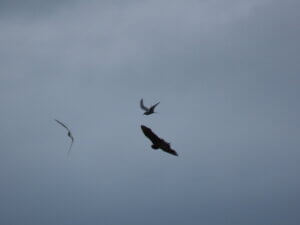 In May, I had the opportunity to guide a group of French birders in Scotland, Orkney to be more precise. The main objective of the trip was seeing seabirds, nothing really new for me as I have seen many at the colonies in Brittany in France and passing along the Portuguese coast. However, the size, noise and smell of the Scottish colonies was another level from the French ones. Also, it was great to see these birds close and in breeding plumage (they pass far and in winter plumage when I see them in Portugal). It was also amazing to see them interacting at the colonies but also at sea. Since we had to take the ferry to go from island to island, we spent some time looking for seabirds. We had the chance of seeing this dark Parasitic skua (Stercorarius parasiticus), mobbing two Arctic Terns (Sterna paradisaea). The picture is not great since the day was cloudy but the interaction between the two species was nice. We saw again this kind of interaction but the Skua was mobbed by the terns this time! Skua steal other birds’ food or predate the eggs and youngs of ground nesting seabirds (like the terns). Parasitic Skuas, like other species have a dark and a light morph. This one is a dark one and of all the Parasitic skuas we saw, we only saw one pale.
In May, I had the opportunity to guide a group of French birders in Scotland, Orkney to be more precise. The main objective of the trip was seeing seabirds, nothing really new for me as I have seen many at the colonies in Brittany in France and passing along the Portuguese coast. However, the size, noise and smell of the Scottish colonies was another level from the French ones. Also, it was great to see these birds close and in breeding plumage (they pass far and in winter plumage when I see them in Portugal). It was also amazing to see them interacting at the colonies but also at sea. Since we had to take the ferry to go from island to island, we spent some time looking for seabirds. We had the chance of seeing this dark Parasitic skua (Stercorarius parasiticus), mobbing two Arctic Terns (Sterna paradisaea). The picture is not great since the day was cloudy but the interaction between the two species was nice. We saw again this kind of interaction but the Skua was mobbed by the terns this time! Skua steal other birds’ food or predate the eggs and youngs of ground nesting seabirds (like the terns). Parasitic Skuas, like other species have a dark and a light morph. This one is a dark one and of all the Parasitic skuas we saw, we only saw one pale.
Text and photo by Guillaume Réthoré
Editor: Filipa Bragança
English proof reading: Helen Rodda
Portuguese proof reading: Lena Soares
Production controller: Helen Rodda
Email: friends.arpt@arocha.org
Thank you for supporting us!
Hope to see you soon!


 What makes a good Birthday present?
What makes a good Birthday present?

